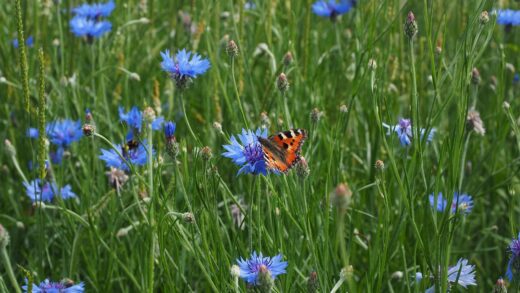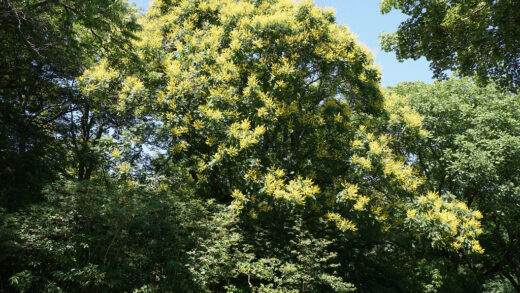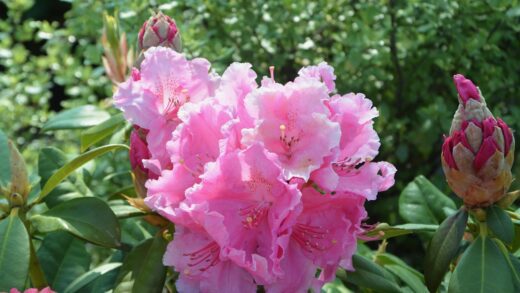Weigela is a genus of deciduous shrubs beloved by gardeners for their vibrant, trumpet-shaped flowers and relatively low-maintenance nature, making them a staple in many temperate landscapes. Proper care is essential to ensure these plants thrive, producing a spectacular display of blooms year after year and maintaining a healthy, vigorous structure. Understanding the fundamental needs of weigela, from its preferred growing conditions to its seasonal requirements, forms the foundation of successful cultivation. This comprehensive guide delves into the specifics of caring for this versatile shrub, providing the detailed knowledge necessary to unlock its full ornamental potential in any garden setting.
The journey to a flourishing weigela begins with a deep appreciation for its natural habits and preferences, which directly inform the best care practices. These shrubs are known for their arching branches and a flowering period that typically peaks in late spring to early summer, with some cultivars offering a second, less profuse bloom later in the season. Attentive care not only maximizes this floral output but also enhances the attractive foliage, which can range from deep green to burgundy or variegated patterns. By mastering the key aspects of its maintenance, one can ensure the plant remains a resilient and beautiful focal point or hedge component for many years.
Central to the care regimen is a proactive approach rather than a reactive one, anticipating the plant’s needs before signs of stress appear. This involves a consistent schedule of watering, feeding, and pruning, all tailored to the specific climate, soil type, and age of the plant. A well-cared-for weigela is not only more visually appealing but also significantly more resistant to common pests and diseases that can afflict less vigorous specimens. Therefore, investing time in proper care is a direct investment in the long-term health and beauty of the shrub.
Ultimately, the goal of a dedicated care routine is to create an environment where the weigela can perform to its genetic potential, showcasing the very characteristics for which it was selected. This includes promoting strong root development, encouraging a dense and well-shaped habit, and stimulating an abundance of flowers that attract pollinators like hummingbirds and bees. Following a structured yet flexible care plan allows the gardener to respond effectively to the plant’s signals, ensuring it receives precisely what it needs throughout its annual growth cycle.
Understanding the weigela genus
The Weigela genus, belonging to the honeysuckle family Caprifoliaceae, encompasses a group of hardy deciduous shrubs native to East Asia. These plants are prized for their arching, graceful form and their profusion of tubular flowers, which appear in late spring and early summer. The color palette of weigela blossoms is extensive, including shades of pink, red, white, and yellow, making them highly versatile in garden design. Understanding their origin provides insight into their adaptability and resilience in various temperate climate zones.
More articles on this topic
Botanically, weigela shrubs are characterized by their opposite, simple leaves and flowers that are produced in small clusters. Most modern garden varieties are cultivars derived from species such as Weigela florida, which is renowned for its ornamental qualities. Breeders have developed a vast array of cultivars that vary significantly in size, from compact dwarf forms suitable for containers to larger specimens that can serve as privacy screens. This diversity allows for the selection of a weigela perfectly suited to the scale and style of almost any garden.
The life cycle of the weigela is a key factor in its care, particularly concerning its flowering and pruning schedule. The shrub produces flowers on old wood, meaning the flower buds for the current season were formed during the previous year’s growth. This critical detail dictates that pruning must be timed carefully to avoid removing these nascent buds, thus ensuring a spectacular floral display. Appreciating this aspect of its biology is fundamental to successful cultivation and maintenance.
Furthermore, different cultivars exhibit unique characteristics that can influence care decisions. For instance, some modern varieties are rebloomers, offering a second flush of flowers in late summer, while others are noted for their striking variegated or deep purple foliage that provides season-long interest. Familiarizing oneself with the specific traits of the chosen cultivar will enable a more tailored approach to its care, optimizing its health and ornamental value throughout the year.
Optimal site selection and soil preparation
Choosing the correct location for planting a weigela is the single most important step in ensuring its long-term health and vitality. These shrubs perform best in a location that receives full sun, which translates to at least six hours of direct sunlight per day. Adequate sunlight is crucial for maximizing flower production and achieving the most vibrant foliage colors, particularly in cultivars with purple or variegated leaves. While weigela can tolerate partial shade, flowering will be significantly reduced, and the plant may develop a more open, leggy habit.
More articles on this topic
Beyond light, the soil conditions must be carefully considered, as weigela thrives in well-draining, moderately fertile soil. It is intolerant of waterlogged conditions, which can quickly lead to root rot and other fatal diseases. Before planting, it is imperative to assess the site’s drainage by observing how water behaves after a heavy rain or by digging a hole and filling it with water. If the water does not drain away within a few hours, the soil structure must be amended to improve its porosity.
Proper soil preparation is essential for giving the shrub a strong start. This involves enriching the native soil with organic matter, such as compost, well-rotted manure, or peat moss, which improves both drainage in heavy clay soils and water retention in sandy soils. The ideal soil pH for weigela is in the slightly acidic to neutral range, approximately 6.0 to 7.0. Conducting a soil test can provide valuable information, allowing for precise amendments to create the perfect growing medium for the plant.
When situating the weigela, it is also important to consider its mature size to ensure it has adequate space to grow without becoming crowded. Crowded conditions can lead to poor air circulation, which increases the risk of fungal diseases and can result in a less aesthetically pleasing shape. Consulting the plant tag for the specific cultivar’s expected height and spread will allow for proper spacing from other plants, buildings, and walkways, preventing future maintenance issues.
Routine maintenance practices
Consistent, routine maintenance is key to keeping a weigela healthy and attractive throughout the growing season. This involves regular monitoring of the plant for any signs of stress, disease, or pest infestation, allowing for early intervention. A weekly walk through the garden to inspect the leaves, stems, and base of the shrub can help in catching potential problems before they become severe. This simple practice is one of the most effective tools in a gardener’s arsenal for proactive plant care.
Mulching is a highly beneficial routine maintenance practice for weigela. Applying a 5 to 7-centimeter layer of organic mulch, such as wood chips or shredded bark, around the base of the shrub helps to conserve soil moisture, suppress weed growth, and regulate soil temperature. The mulch should be kept a few centimeters away from the main stems to prevent moisture buildup against the bark, which could lead to rot. As the organic mulch decomposes, it also contributes to the soil’s fertility over time.
Weed control is another important aspect of routine care, as weeds compete with the weigela for essential resources like water, nutrients, and light. Regularly removing weeds from around the base of the shrub, either by hand-pulling or careful hoeing, minimizes this competition. A healthy layer of mulch is the best defense against weed encroachment, but any weeds that do emerge should be dealt with promptly to prevent them from setting seed and multiplying.
Finally, deadheading, or the removal of spent flowers, can be a beneficial practice, particularly for reblooming varieties of weigela. While not strictly necessary for the plant’s health, trimming off the faded flower clusters can neaten the shrub’s appearance and encourage it to direct its energy towards producing a secondary flush of blooms later in the season. This task can be combined with a light shaping of the plant to maintain its desired form.
Pruning for health and bloom production
Pruning is one of the most critical care activities for weigela, directly influencing its shape, size, health, and flowering capacity. The primary rule of pruning this shrub is to do it immediately after the main flowering period has concluded, which is typically in early summer. Since weigela blooms on the previous year’s growth (old wood), pruning too late in the season or in early spring will remove the flower buds and result in a year with few to no flowers. This timing is absolutely essential for a successful floral display.
The goals of annual pruning are threefold: to maintain a desirable size and shape, to improve air circulation within the plant, and to encourage the growth of new wood that will carry the following year’s blooms. The process should begin with the removal of any dead, damaged, or diseased branches, cutting them back to a healthy point. Following this, any branches that are crossing or rubbing against each other should be thinned out to prevent wounds and improve the plant’s overall structure.
For general shaping and size control, up to one-third of the oldest and largest stems can be cut back to the base of the plant. This technique, known as renewal pruning, invigorates the shrub, encouraging it to produce new, vigorous shoots from the crown. This not only keeps the plant’s size in check but also ensures a continuous cycle of productive, flower-bearing wood, preventing the shrub from becoming woody and sparse at its center.
In addition to the main post-flowering prune, a light shaping can be done at any time to remove errant stems or maintain a tidy appearance. However, heavy cutting should be strictly avoided outside the recommended window. For severely overgrown and neglected shrubs, a more drastic rejuvenation pruning may be necessary, involving cutting the entire plant back to about 10-15 centimeters from the ground in late winter. While this will sacrifice the following season’s flowers, the plant will respond with vigorous new growth, completely renewing the shrub over one or two seasons.
Seasonal care considerations
Adapting the care routine for weigela to the changing seasons is crucial for its sustained health and performance. In the spring, as new growth emerges, the focus should be on providing the plant with the resources it needs for a strong start. This is the ideal time to apply a balanced, slow-release fertilizer to fuel the development of foliage and the impending flower display. It is also important to monitor soil moisture levels as temperatures rise, ensuring the plant is adequately hydrated.
During the summer months, the primary focus shifts to watering and post-flowering maintenance. After the spectacular bloom period concludes, this is the critical window for pruning, as discussed previously. Throughout the hotter, drier parts of summer, consistent watering is essential, especially for younger plants that have not yet established an extensive root system. Checking the moisture level of the top few centimeters of soil will help determine when to water deeply.
As autumn approaches, the care regimen for weigela begins to focus on preparing the plant for winter dormancy. Watering should be gradually reduced to help harden off the new growth in preparation for colder temperatures. It is also advisable to add a fresh layer of mulch around the base of the shrub to insulate the root system from freezing temperatures. Refrain from heavy pruning or fertilizing in the fall, as this can stimulate tender new growth that will be susceptible to frost damage.
Winter care for weigela is generally minimal, as the plant is dormant. However, in regions with heavy snowfall, care should be taken to gently brush off excessive snow accumulation from the branches to prevent them from breaking under the weight. For younger plants or less hardy cultivars in colder climates, providing some form of winter protection, such as a burlap screen, can help shield them from harsh winds and extreme cold. This seasonal approach ensures the plant’s needs are met year-round, leading to a robust and long-lived shrub.


















